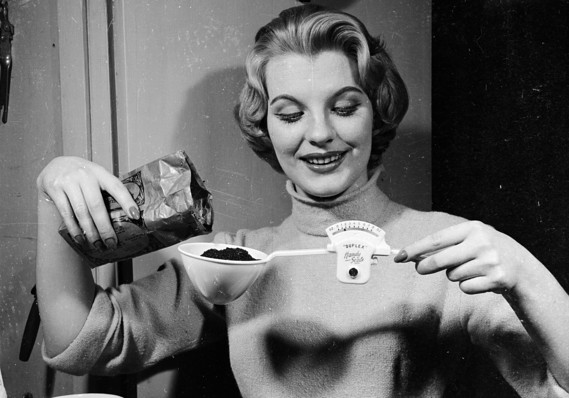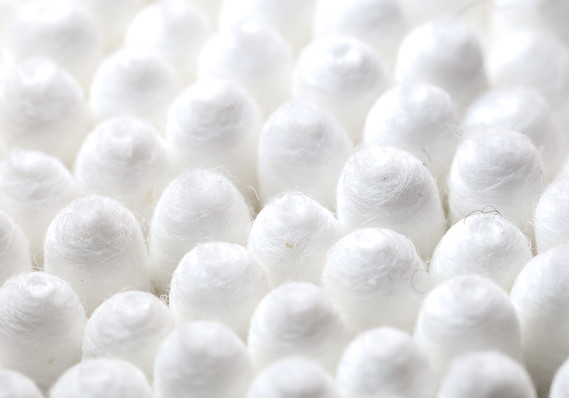If you’ve visited a restaurant in recent months, there’s a good chance you’ve learned about the new enemy that has emerged in the fight against plastic waste: the single-use plastic straw.
Starbucks SBUX, -0.87% is among the U.S. companies that has committed to eliminating all single-use plastic straws in its stores by 2020. Instead, drinks that usually come with straws will have strawless lids or straws made from some type of alternative material.
The company isn’t alone. The cruise line Royal Caribbean RCL, -0.48% has also stopped using plastic straws. And several cities, including Seattle, Miami Beach and San Luis Obispo, Calif., have announced their own bans or limits on plastic straws.
See also: Starbucks and McDonald’s plastic straw removal will go down well with millennials
“The death of the plastic straw means better life for marine animals,” said Jessica Dutton, the director of special projects at the University of Southern California’s Dornsife Wrigley Institute for Environmental Studies.
April 22 is Earth Day, a worldwide day of awareness to reduce waste and protect the environment. This isn’t the first time companies and cities have tried to promote such efforts.
Here’s a brief history of disposable packaging:
The tide turns against cotton buds and plastic bottles
The European Union has seemingly gone a step further than the U.S. when it comes to plastics: It has proposed banning additional plastic products including cotton buds (like the ones used for cleaning ears) and balloon sticks. The EU’s vice president said the organization wouldn’t ban those items completely, but companies would have to take steps to make them out of sustainable materials.
And the latest push to ban plastic products doesn’t end there. Environmental advocates say bottled water is too expensive and unnecessary. There are several petitions on Change.org calling for the ban of plastic water bottles (though they have few signatures), and the town of Concord, Mass., banned sales of plastic water bottles smaller than one liter in 2013.
Sales of plastic bottles of water have also continued to grow in the U.S. In the four decades since the launch of Perrier water in the U.S., consumption of bottled water surged 2,700%, from 354 million gallons in 1976 to 11.7 billion gallons in 2015, according to the International Bottled Water Association.
Bottled water has the smallest environmental footprint of all packaged beverages, said Jill Culora, a spokeswoman for the International Bottled Water Association. Bottled water containers are 100% recyclable, she said. “In addition, bottled water containers are the most common item in curbside recycling programs, recycled at a rate of 53.9%,” she added.
But right now in the U.S., the focus remains on straws. “Straws are a great place to start because they’re something everyone uses,” Dutton of USC said. “It’s not about straws alone, but recognizing how prevalent single-use plastics are in our lives and reducing where we can.”
The early days of paper cups
The first paper plates and cups were invented in the early 1900s, according to historians.
In 1907, a lawyer in Boston developed the single-use paper cup, after scientists realized that diseases such as cholera and diphtheria were spreading because people were sharing communal cups at public water fountains. The lawyer, Lawrence Luellen, and his brother-in-law moved to new York in 1910 and produced their product, the Health Kup. Their company eventually became Dixie Cup, a brand many recognize today.
Paper cups continued to grow in popularity. The market for U.S. paper cups and paper plates reached $20.5 billion in 2017 and is expected to grow to $21.7 billion in 2023, according to a report from IMARC Group, a market research firm. Though many paper cups are made from renewable resources like wood or bamboo, they’re not necessarily an eco-friendly choice. Some are coated with substances that make them impossible to recycle, so they end up at the landfill.
 Getty Images
Getty Images
Plastic took off after World War II
The production of plastic really took off during World War II, according to the Science History Institute, a nonprofit organization based in Philadelphia. During the war, plastic production in the U.S. increased by 300%. And plastic began to be used for more purposes.
Single-use food packaging products — which also include those made from materials like aluminum — became widespread in the 1960s, according to the Foodservice Packaging Institute, a trade group based in Falls Church, Va.
At the same time, scientists started to alert the public about the dangers of using too many plastics and other forms of pollution. The Rachel Carson book “Silent Spring,” published in 1962, created more awareness of the effects of chemical pesticides, and a 1969 oil spill off the California coast raised alarm about the health of waterways.
Plastic debris was first spotted in the ocean in the 1960s, according to the Science History Institute. By the 1970s and 1980s, plastic had a damaged reputation, the Science History Institute said.
Today, American consumers discard around 33.6 million tons of plastic each year, but only 6.5% of that is recycled and 7.7% is combusted in waste-to-energy facilities, according to Columbia University’s Earth Center.
Where disposable containers stand now
Despite this, the use of plastic has continued to grow. The share of plastics in municipal solid waste (by mass) increased from less than 1% in 1960 to more than 10% by 2005 in middle- and high-income countries, according to a report by environmental researchers Roland Geyer, Jenna Jambeck and Kara Lavender Law.
But some restaurants have made changes. In 1990, McDonald’s MCD, -0.51% announced it would phase out its foam containers, as part of a push to be more environmentally sustainable. The restaurant chain had worked with the Environmental Defense Fund to look at how it handles its disposable products.
Earlier this year, the fast-food giant said it would stop using foam packaging entirely by the end of 2018.
Entire cities have also banned foam containers, in an effort to cut down on non-recyclable materials, including New York City in 2015.
Single-use packaging can be more sanitary than reusing containers, said Lynn Dyer, a spokeswoman for the Foodservice Packaging Institute, a trade group. But making more packaging compostable or recyclable can help with waste, she said.
Plastic bags are another target
Plastic bags have also become a target: California became the first state to ban retailers from handing them out in 2014. The most populous counties in Hawaii also prohibit non-biodegradable plastic bags. And several cities, including Austin, Boston, Chicago and Seattle, have also banned them.
At the end of their life, only 5% of reusable plastic bags are recycled in the U.S., according to a 2011 report by California State University, Chico, and Clemson University. That’s the same recycling rate for single-use plastic bags.
By 2050, there will be more plastic by weight in the world’s oceans than fish, according to a 2018 report by the New York State Plastic Bag Task Force. “Plastic bags also interfere with wastewater treatment plants, pose a threat to fish and wildlife, and break down into microplastics,” it said.
However, some solutions to the waste have their own holes: Some reusable bags need to be used over 100 times before they’re better for the environment than single-use plastic bags. Polyethylene bags need to be used four times, a polypropylene bag must be used at least 11 times, and a cotton bag must be used at least 131 times, according to a study by the U.K. Environment Agency. And some reusable bags are shipped from halfway around the world.
(This story was republished on April 22, 2019.)
 Getty Images
Getty Images
Get a daily roundup of the top reads in personal finance delivered to your inbox. Subscribe to MarketWatch’s free Personal Finance Daily newsletter. Sign up here.








